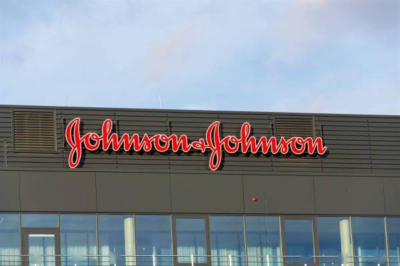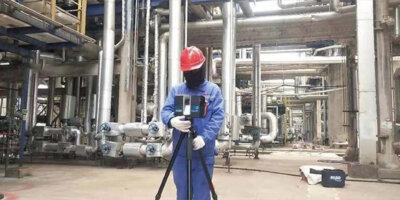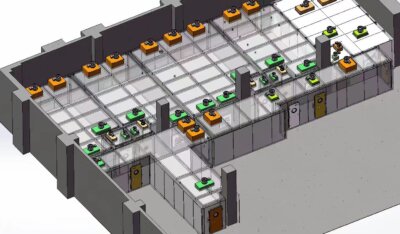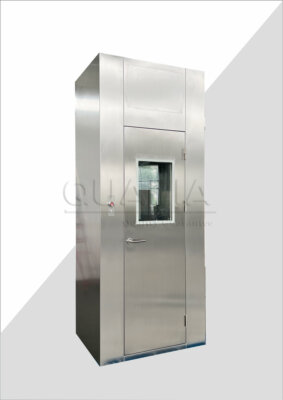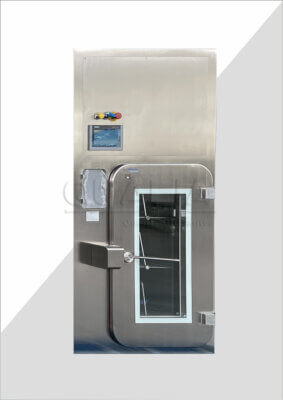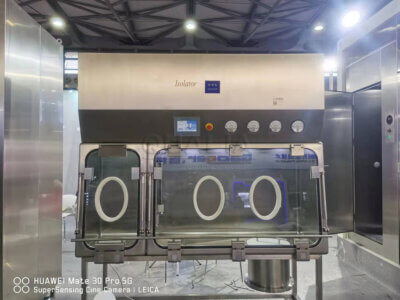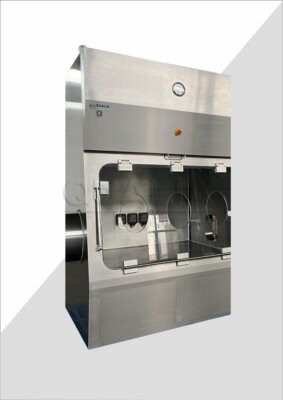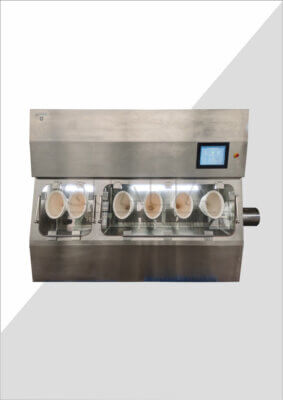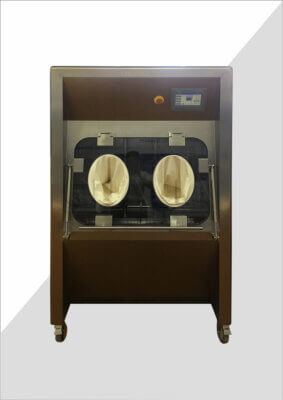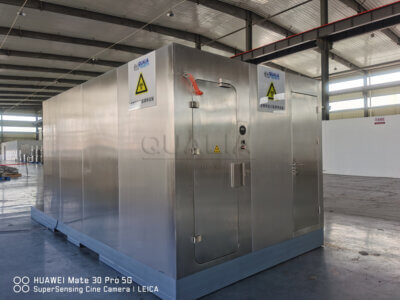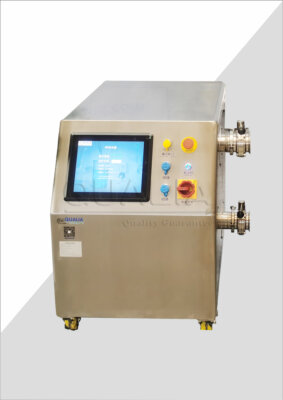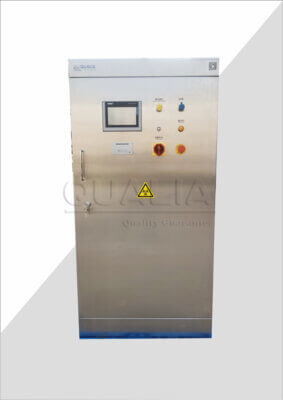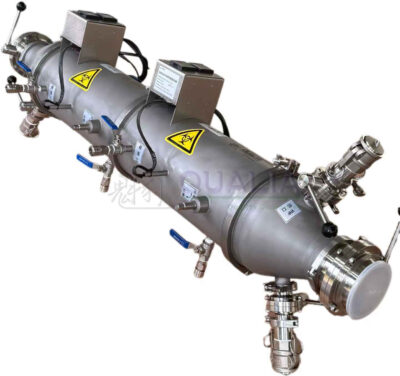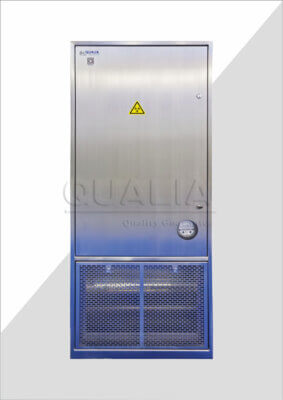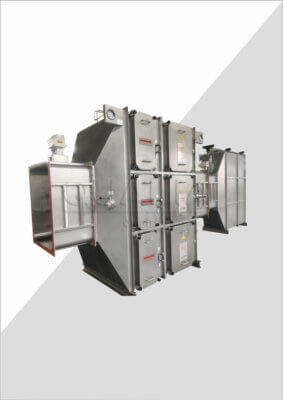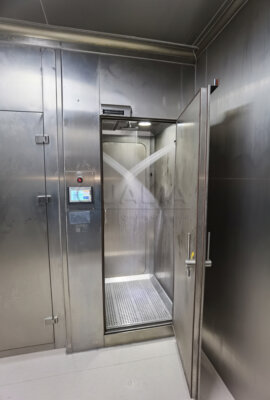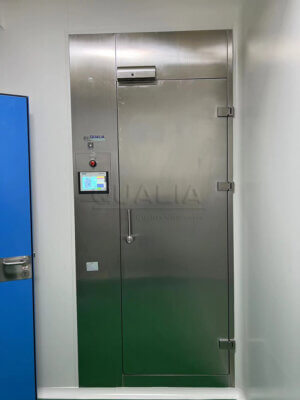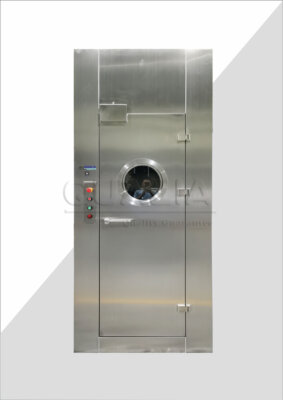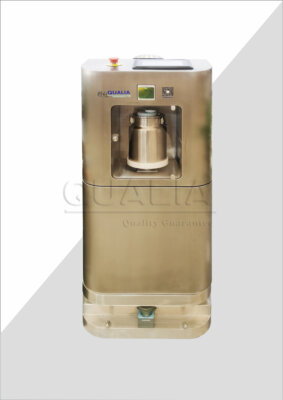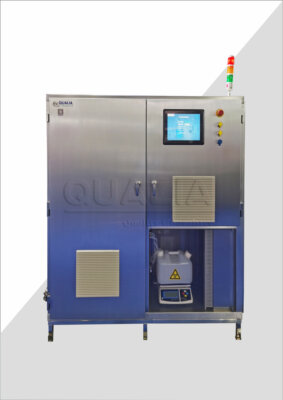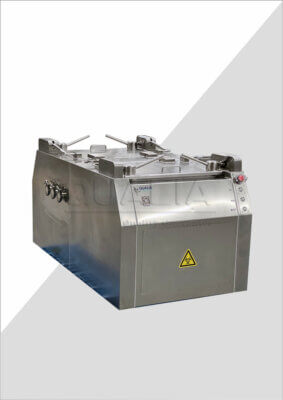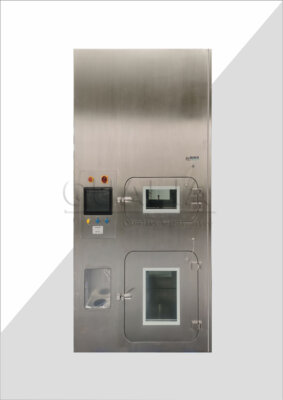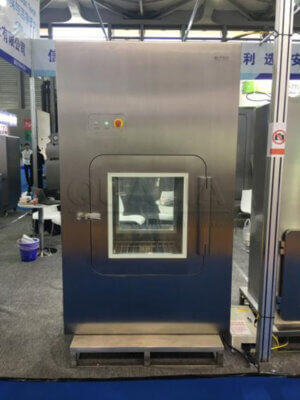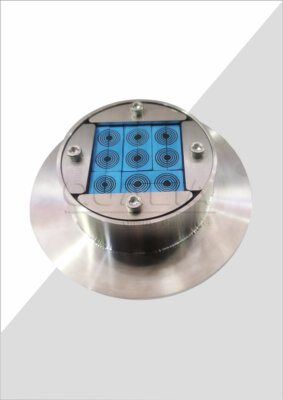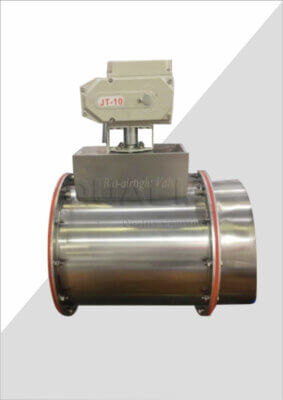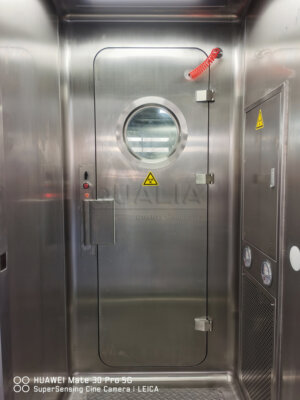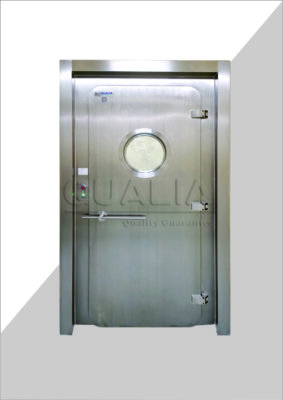Vaporized Hydrogen Peroxide (VHP) sterilization in OEB4/OEB5 isolators has revolutionized the pharmaceutical and biotechnology industries, offering unparalleled safety and efficiency in handling highly potent compounds. This advanced technology combines the power of VHP with the containment capabilities of high-level isolators, creating a sterile environment crucial for manufacturing and research processes involving hazardous materials.
The integration of VHP sterilization within OEB4 and OEB5 isolators addresses the growing demand for stringent contamination control and worker safety in pharmaceutical production. This comprehensive guide will explore the intricacies of VHP sterilization, its implementation in high-containment isolators, and the benefits it brings to the industry.
As we delve into this topic, we'll examine the fundamental principles of VHP sterilization, the specific requirements of OEB4 and OEB5 containment levels, and how these technologies synergize to create a safer, more efficient working environment. From the design considerations of isolators to the validation processes for VHP cycles, this article aims to provide a thorough understanding of this critical aspect of pharmaceutical manufacturing.
VHP sterilization in OEB4/OEB5 isolators represents a significant advancement in contamination control and safety protocols, offering a 99.9999% reduction in microbial contamination while maintaining the integrity of sensitive materials and protecting operators from exposure to highly potent compounds.
What is VHP Sterilization and How Does it Work in Isolators?
Vaporized Hydrogen Peroxide (VHP) sterilization is a powerful and efficient method for decontaminating surfaces and equipment within controlled environments. In the context of OEB4/OEB5 isolators, VHP plays a crucial role in maintaining sterility and safety.
VHP sterilization utilizes hydrogen peroxide in its gaseous state to eliminate microorganisms, including bacteria, viruses, and spores. This process is particularly effective due to its ability to penetrate even the smallest crevices and porous materials.
When implemented in isolators, VHP sterilization typically follows a four-phase cycle:
- Dehumidification
- Conditioning
- Sterilization
- Aeration
Each phase is carefully controlled to ensure optimal sterilization efficacy while preserving the integrity of the isolator and its contents.
Studies have shown that VHP sterilization can achieve a 6-log reduction in microbial contamination within minutes, making it one of the most rapid and effective sterilization methods available for use in pharmaceutical isolators.
| Phase | Duration | Purpose |
|---|---|---|
| Dehumidification | 10-30 minutes | Reduce humidity to enhance VHP efficacy |
| Conditioning | 5-10 minutes | Introduce VHP to reach target concentration |
| Sterilization | 15-60 minutes | Maintain VHP concentration for microbial reduction |
| Aeration | 30-120 minutes | Remove VHP and return isolator to safe levels |
The integration of VHP sterilization in OEB4/OEB5 isolators by QUALIA has significantly enhanced the safety and efficiency of pharmaceutical manufacturing processes, setting new standards in containment technology.
What are OEB4 and OEB5 Containment Levels and Why are They Important?
Occupational Exposure Bands (OEB) are a crucial classification system used in the pharmaceutical industry to categorize compounds based on their potency and potential health hazards. OEB4 and OEB5 represent the highest levels of containment, necessary for handling extremely potent or toxic substances.
OEB4 typically covers compounds with an occupational exposure limit (OEL) between 1-10 μg/m³, while OEB5 is reserved for compounds with an OEL below 1 μg/m³. These classifications demand the most stringent safety measures and containment strategies.
The importance of OEB4 and OEB5 containment levels cannot be overstated. They are essential for:
- Protecting worker health and safety
- Preventing cross-contamination
- Ensuring product quality and integrity
- Complying with regulatory requirements
Implementing proper containment measures for OEB4 and OEB5 compounds can reduce the risk of occupational exposure by up to 99.99%, significantly enhancing worker safety in pharmaceutical manufacturing environments.
| Containment Level | OEL Range | Example Compounds |
|---|---|---|
| OEB4 | 1-10 μg/m³ | Potent hormones, some cytotoxics |
| OEB5 | <1 μg/m³ | Highly potent APIs, novel compounds |
The VHP sterilization in OEB4/OEB5 isolators offered by QUALIA ensures that these critical containment requirements are met while maintaining the sterility necessary for pharmaceutical production.
How are OEB4/OEB5 Isolators Designed to Accommodate VHP Sterilization?
The design of OEB4/OEB5 isolators for VHP sterilization requires careful consideration of materials, geometry, and integration of sterilization systems. These isolators must not only provide high-level containment but also facilitate efficient and effective VHP distribution and removal.
Key design features of OEB4/OEB5 isolators for VHP sterilization include:
- Non-porous, VHP-resistant materials
- Smooth internal surfaces to minimize VHP absorption
- Optimized air flow patterns for even VHP distribution
- Integrated VHP generation and distribution systems
- Efficient ventilation for VHP removal during aeration
These design elements work in concert to ensure that the VHP sterilization process is both effective and safe within the high-containment environment.
Advanced OEB4/OEB5 isolators designed for VHP sterilization can achieve a sterility assurance level (SAL) of 10^-6, indicating a one-in-a-million probability of a viable microorganism surviving the sterilization process.
| Design Feature | Purpose |
|---|---|
| VHP-resistant materials | Prevent degradation and ensure long-term reliability |
| Smooth internal surfaces | Facilitate easy cleaning and minimize VHP absorption |
| Optimized air flow | Ensure uniform VHP distribution throughout the isolator |
| Integrated VHP systems | Allow for controlled and automated sterilization cycles |
The thoughtful design of OEB4/OEB5 isolators by manufacturers like QUALIA ensures that VHP sterilization can be seamlessly integrated into pharmaceutical manufacturing processes, enhancing both safety and efficiency.
What are the Key Considerations for Implementing VHP Sterilization in OEB4/OEB5 Environments?
Implementing VHP sterilization in OEB4/OEB5 environments requires careful planning and consideration of various factors to ensure safety, efficacy, and regulatory compliance. Key considerations include:
- Compatibility of materials and equipment with VHP
- Cycle development and optimization
- Validation of sterilization processes
- Integration with existing containment strategies
- Training of personnel in VHP handling and safety protocols
- Monitoring and control systems for VHP concentration and distribution
Each of these factors plays a crucial role in the successful implementation of VHP sterilization within high-containment isolators.
Proper implementation of VHP sterilization in OEB4/OEB5 environments can lead to a 30-50% reduction in downtime associated with manual cleaning and decontamination processes, significantly improving operational efficiency.
| Consideration | Impact on Implementation |
|---|---|
| Material compatibility | Ensures longevity of isolator and contained equipment |
| Cycle optimization | Maximizes sterilization efficacy while minimizing cycle time |
| Process validation | Demonstrates consistent achievement of sterility requirements |
| Containment integration | Maintains OEB4/OEB5 containment levels during sterilization |
By addressing these key considerations, pharmaceutical manufacturers can leverage the full potential of VHP sterilization in OEB4/OEB5 isolators, enhancing both product quality and worker safety.
How Does VHP Sterilization Compare to Other Methods for OEB4/OEB5 Isolators?
When it comes to sterilization methods for OEB4/OEB5 isolators, VHP stands out for its efficacy, speed, and material compatibility. However, it's important to compare it with other methods to understand its advantages and potential limitations.
Common sterilization methods for isolators include:
- VHP (Vaporized Hydrogen Peroxide)
- Chlorine dioxide gas
- Formaldehyde
- Ethylene oxide
- UV radiation
Each method has its own set of pros and cons, but VHP has gained prominence in recent years due to its unique combination of benefits.
Studies have shown that VHP sterilization can achieve a 6-log reduction in microbial contamination in as little as 30 minutes, compared to several hours required for some traditional methods, making it up to 75% faster in some applications.
| Sterilization Method | Advantages | Disadvantages |
|---|---|---|
| VHP | Rapid, effective, leaves no residue | Requires specialized equipment |
| Chlorine dioxide | Effective against wide range of microorganisms | Potential for corrosion, complex to generate |
| Formaldehyde | Low cost, well-established | Long cycle times, toxic residues |
| Ethylene oxide | Effective for heat-sensitive materials | Long cycle times, potentially carcinogenic |
| UV radiation | No chemical residues | Limited penetration, potential material degradation |
The superior performance of VHP sterilization in OEB4/OEB5 isolators has led to its widespread adoption in the pharmaceutical industry, with manufacturers like QUALIA integrating this technology into their advanced containment solutions.
What are the Regulatory Requirements for VHP Sterilization in OEB4/OEB5 Isolators?
Regulatory compliance is a critical aspect of implementing VHP sterilization in OEB4/OEB5 isolators. Various regulatory bodies, including the FDA, EMA, and WHO, have established guidelines and requirements for sterilization processes in pharmaceutical manufacturing.
Key regulatory considerations for VHP sterilization in OEB4/OEB5 isolators include:
- Validation of sterilization processes
- Documentation of cycle parameters and results
- Routine monitoring and revalidation
- Personnel training and certification
- Environmental monitoring and control
- Risk assessment and mitigation strategies
Adhering to these regulatory requirements ensures that VHP sterilization processes meet the necessary standards for safety and efficacy.
Compliance with regulatory requirements for VHP sterilization in OEB4/OEB5 isolators can reduce the risk of product recalls due to contamination issues by up to 90%, safeguarding both patient safety and company reputation.
| Regulatory Aspect | Requirement |
|---|---|
| Process Validation | Demonstration of consistent sterility assurance level (SAL) |
| Documentation | Detailed records of cycle parameters, results, and deviations |
| Revalidation | Periodic reassessment of sterilization efficacy |
| Personnel Training | Documented training on VHP handling and safety procedures |
By meeting these regulatory requirements, pharmaceutical manufacturers can ensure that their VHP sterilization processes in OEB4/OEB5 isolators are compliant, effective, and safe.
What Future Developments Can We Expect in VHP Sterilization for OEB4/OEB5 Isolators?
The field of VHP sterilization for OEB4/OEB5 isolators is continuously evolving, with ongoing research and development aimed at enhancing efficiency, safety, and integration with advanced manufacturing processes.
Some anticipated future developments include:
- Advanced sensors for real-time VHP monitoring and control
- Integration with Industry 4.0 technologies for predictive maintenance
- Development of more VHP-resistant materials for isolator construction
- Improved VHP generation systems for faster cycle times
- Enhanced automation of sterilization processes
- Integration with continuous manufacturing systems
These advancements promise to further improve the effectiveness and efficiency of VHP sterilization in high-containment environments.
Emerging technologies in VHP sterilization for OEB4/OEB5 isolators are expected to reduce cycle times by up to 40% and improve energy efficiency by 25% over the next five years, contributing to more sustainable pharmaceutical manufacturing processes.
| Future Development | Potential Impact |
|---|---|
| Advanced sensors | More precise control of VHP concentration and distribution |
| Industry 4.0 integration | Improved predictive maintenance and reduced downtime |
| New materials | Extended isolator lifespan and reduced maintenance costs |
| Improved VHP generation | Faster sterilization cycles and increased throughput |
As these developments unfold, manufacturers like QUALIA are likely to incorporate cutting-edge technologies into their OEB4/OEB5 isolator designs, further enhancing the capabilities of VHP sterilization in pharmaceutical manufacturing.
In conclusion, VHP sterilization in OEB4/OEB5 isolators represents a critical advancement in pharmaceutical manufacturing technology. Its ability to provide rapid, effective sterilization while maintaining the highest levels of containment makes it an invaluable tool in the production of potent and sensitive compounds. As we've explored, the implementation of VHP sterilization in these high-containment environments involves careful consideration of design, regulatory requirements, and operational factors.
The synergy between VHP technology and advanced isolator design has set new standards for safety, efficiency, and product quality in the pharmaceutical industry. As the field continues to evolve, we can expect further innovations that will enhance the capabilities of VHP sterilization, potentially revolutionizing how we approach containment and sterility in pharmaceutical manufacturing.
Manufacturers and researchers in the pharmaceutical industry would do well to stay abreast of these developments, as they promise to shape the future of drug production, particularly for highly potent and sensitive compounds. By embracing these advancements and adhering to best practices in VHP sterilization and containment, the industry can continue to push the boundaries of what's possible in pharmaceutical manufacturing, ultimately benefiting patients worldwide through safer, more efficient drug production processes.
External Resources
- Unlocking Sterility and Safety: The OEB4 / OEB5 Isolator by QUALIA – This article discusses the OEB4 / OEB5 Isolator by QUALIA, focusing on its advanced filtration systems, modular design, and integrated cleaning and sterilization capabilities, including Vaporized Hydrogen Peroxide (VHP) sterilization.
- Containment OEB 5 Manufacturer, Supplier & Exporter in India – This page describes the features and applications of OEB 5 isolators, including their use in granulation lines and the incorporation of VHP sterilization technology to ensure a sterile and safe working environment.
- Vaporized Hydrogen Peroxide: A Well-Known Technology with a New Perspective – This article provides an in-depth look at VHP technology, its history, and its applications, including its use in sterilizing equipment and environments, which is relevant to OEB4/OEB5 isolators.
- Closed isolator, negative pressure isolator, containment isolator … – This page details the features of negative pressure isolators, including the use of hydrogen peroxide sterilization technology to decontaminate material surfaces effectively within OEB5 containment levels.
- Pharma OEB Best Practice – Although this document does not specifically focus on VHP sterilization, it provides best practices for handling materials in OEB4/OEB5 environments, which includes the use of isolators and other containment strategies that may involve VHP sterilization.
- Isolators for Pharmaceutical and Biotech Applications – This resource highlights the use of isolators in pharmaceutical and biotech applications, including the integration of VHP sterilization to maintain sterility and safety in OEB4/OEB5 environments.
- Sterilization and Decontamination in Isolators – This article discusses various sterilization methods used in isolators, including VHP, and their importance in maintaining sterile conditions in OEB4/OEB5 settings.
Related Contents:
- The Future of Containment: OEB4 vs OEB5 Isolators
- Enhancing Sterility in High Containment: VHP Integration for OEB4/OEB5 Isolators
- OEB4/OEB5 Glove Box Isolators: Handling Potent Compounds
- Integrating VHP Sterilization in Advanced Pharmaceutical Isolators
- OEB4/OEB5 Isolators: Top High Containment Systems
- Portable OEB4/OEB5 Isolators: Mobility Meets Safety
- Safeguarding Potent Compounds: Choosing the Right OEB4/OEB5 Isolator
- Isolators vs. Containment: Advancing Pharmaceutical Safety
- Isolators: Ensuring GMP Compliance in Pharma

